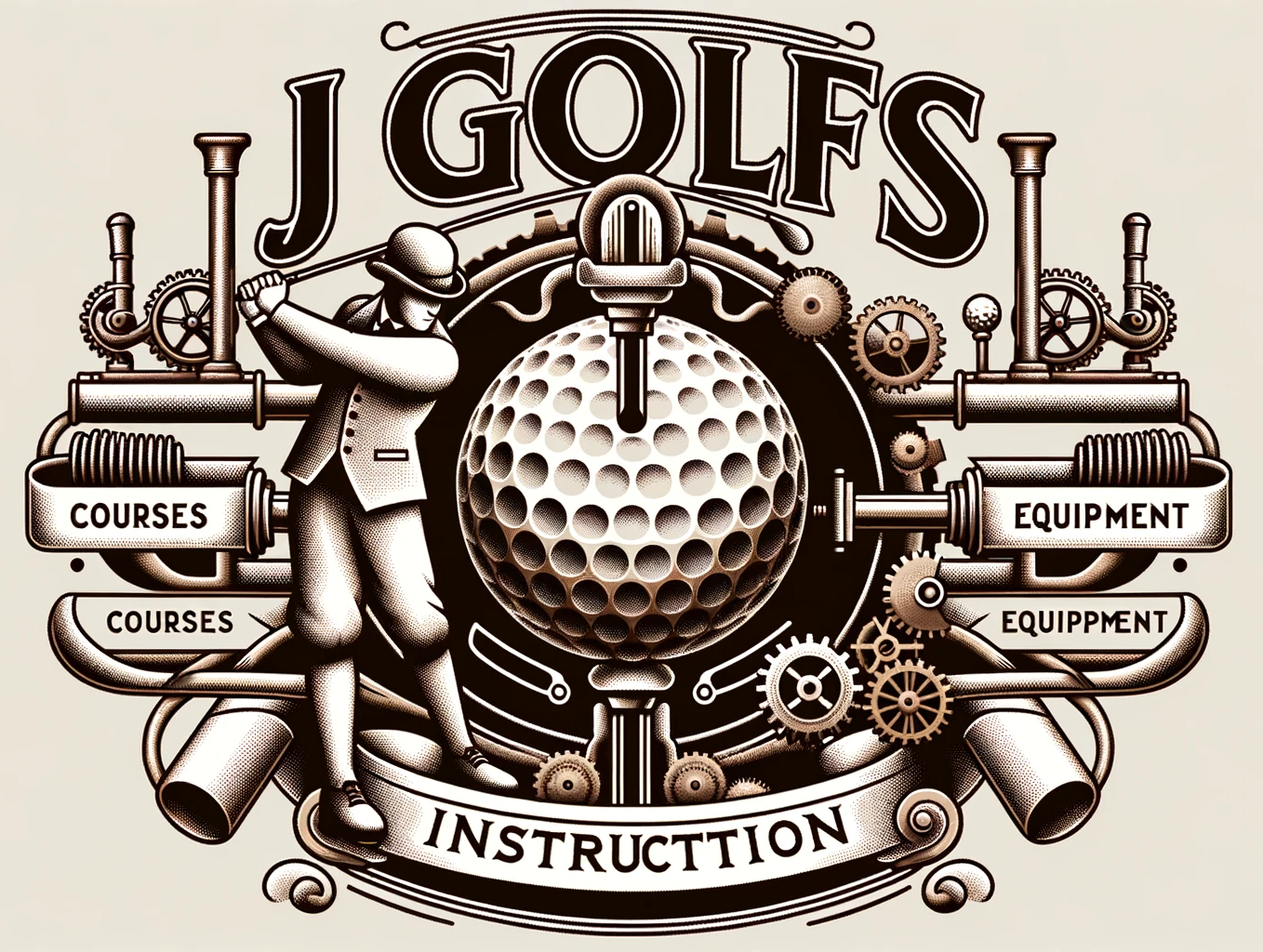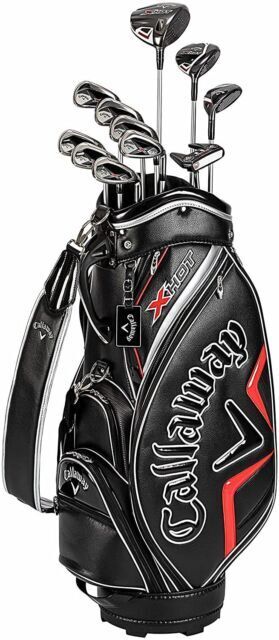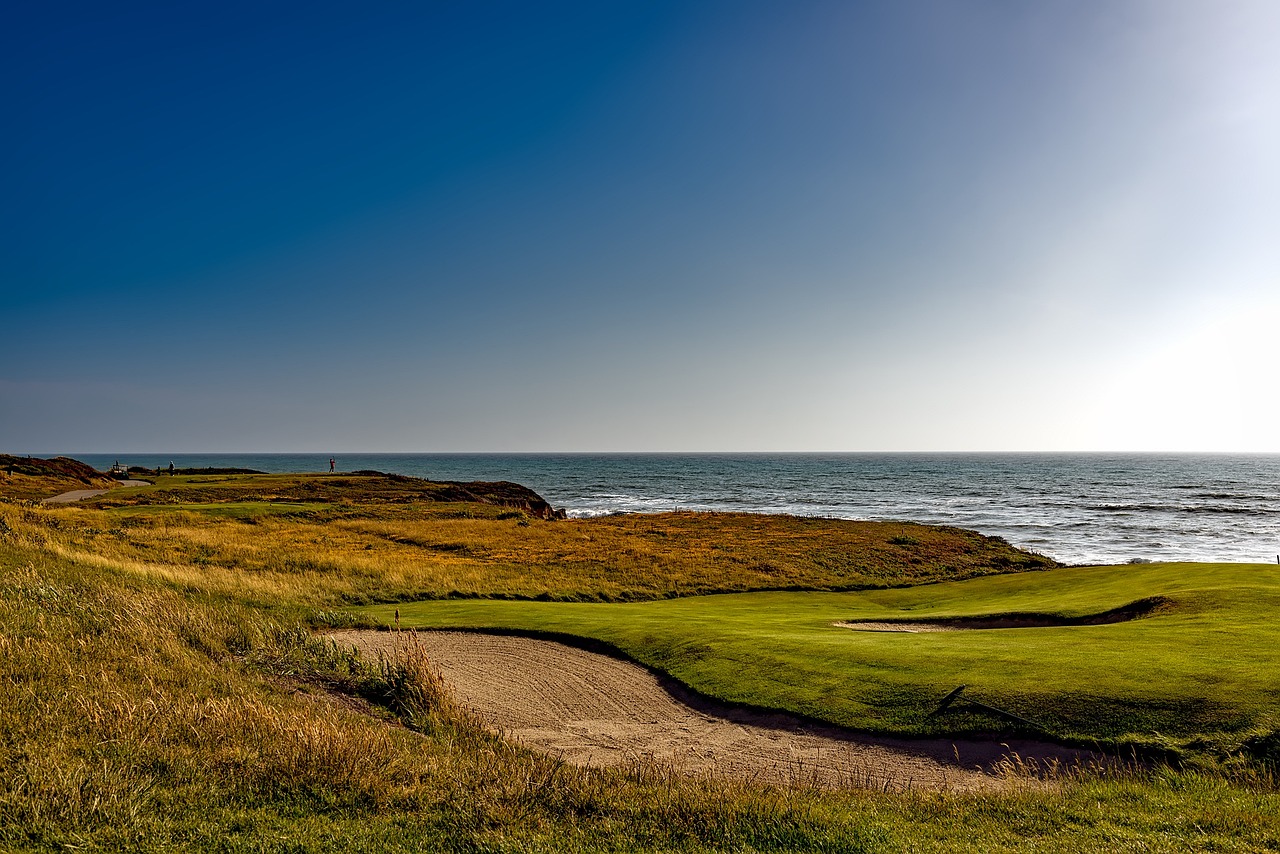
Choosing The Right Golf Clubs: A Golfer’s Essential Guide
Are you a golfer looking to improve your game and take it to the next level? Then you’ve come to the right place! In this essential guide, we will explore the crucial factors to consider when choosing the right golf clubs for your unique needs and playing style. As a seasoned golfer and equipment enthusiast, I understand the significance of having the perfect club in your hands, and I’m excited to share my expertise with you. Get ready to elevate your game and make every swing count with the right golf clubs by your side. Let’s dive in!
1. Understanding Golf Clubs
Golf clubs are the essential tools of the trade for any golfer. Understanding the components and different types of golf clubs is crucial in optimizing your game.
Components of a Golf Club
A golf club consists of several components that work together to deliver the desired performance. These components include the grip, shaft, and club head. The grip provides the necessary hold and control, the shaft serves as the connection between the grip and the club head, and the club head is responsible for striking the ball. Each component contributes to the overall feel and playability of the club.
Different Types of Golf Clubs
Golf clubs are generally classified into several categories to suit different aspects of the game. These categories include woods, irons, hybrids, wedges, and putters. Woods are typically used for long-distance shots, while irons provide precision and control. Hybrids combine elements of both woods and irons, making them versatile options. Wedges are designed for short shots and specialized shots around the green, and putters are used for the final strokes on the putting green. Understanding the purpose and characteristics of each type of club can greatly enhance your gameplay.
Different Types of Golf Club Heads
The club head is a critical component of the golf club, and there are various types available to cater to different player preferences and skill levels. Common types of golf club heads include cavity backs, blade irons, forged irons, and cast irons. Cavity back irons provide forgiveness and ease of use, while blade irons offer greater control and precision. Forged irons are known for their soft feel and workability, while cast irons provide durability and affordability. Selecting the right club head can significantly impact the performance and enjoyment of your game.
Considerations for Left-Handed Golfers
Left-handed golfers face unique considerations when it comes to choosing golf clubs. While many clubs are designed for right-handed players, left-handed options are available for those who swing from the opposite side. It is essential for left-handed golfers to try out different club options, as the feel and performance can vary. Left-handed players should also consider grip size, club orientation, and shaft flex when selecting their clubs. By taking these factors into account, left-handed golfers can ensure a better fit and ultimately enhance their game.
2. Determining Your Skill Level
Understanding your skill level is crucial when it comes to selecting the right golf clubs. Different skill levels require different types of clubs to optimize performance and enjoyment on the course.
The Importance of Knowing Your Skill Level
Knowing your skill level is essential as it allows you to make informed decisions regarding club selection. A beginner golfer may benefit from clubs that provide forgiveness and help with distance, while an advanced player may require clubs that offer greater control and workability. By recognizing your skill level, you can select clubs that match your abilities and promote improvement.
How Skill Level Affects Club Selection
Your skill level directly impacts the clubs that are suitable for your game. Beginner players are advised to start with a more forgiving and game improvement style set of clubs. These clubs typically have larger club heads and more perimeter weighting, making it easier to hit the ball straighter and get the ball airborne. Intermediate players have developed a more consistent swing and may benefit from a mix of game improvement and player’s irons. Advanced players, on the other hand, have the ability to shape shots and control trajectory, making player’s irons a suitable choice. By understanding your skill level, you can make the right club selection to enhance your game.
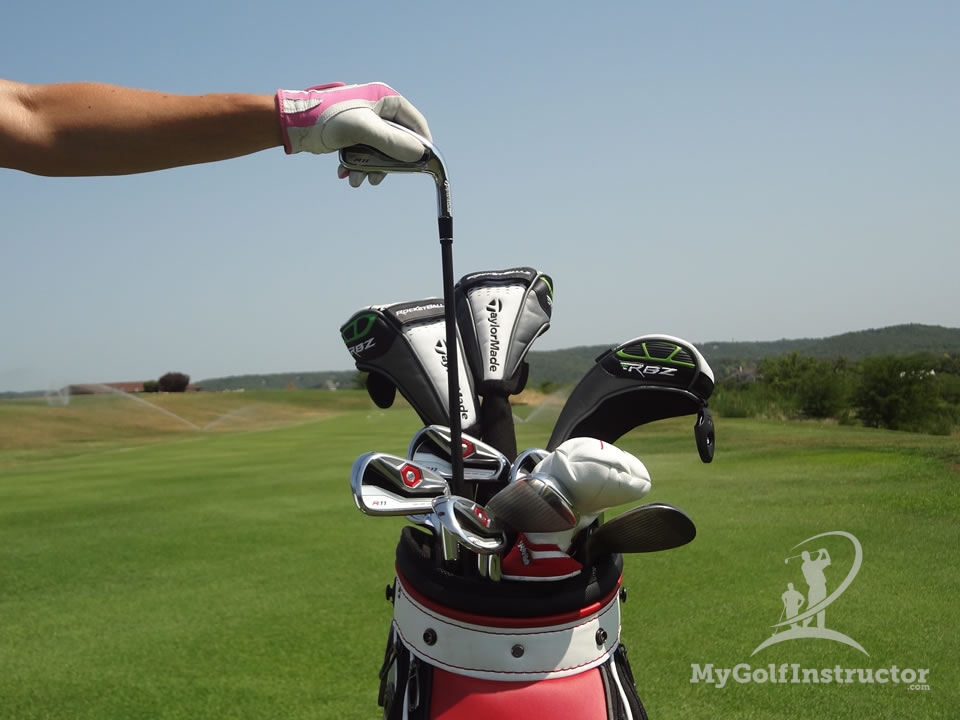
Club Recommendations for Beginners
Beginner golfers should opt for clubs that offer forgiveness and provide an easy learning curve. Game improvement irons, with their larger club heads and perimeter weighting, make it easier to get the ball airborne and straighter, even on off-center hits. Woods with larger sweet spots and higher lofts make it easier to launch the ball off the tee and fairway. It is also beneficial for beginners to consider hybrid clubs, which offer easier playability and versatility.
Club Recommendations for Intermediate Players
Intermediate players possess a more consistent swing and are ready to progress from game improvement clubs. A combination of game improvement and player’s irons is the ideal choice for intermediate players. This mix provides forgiveness on off-center hits while offering improved feel and control on well-struck shots. Players in this skill level may also benefit from trying different shaft flexes to find the one that best complements their swing speed and tempo.
Club Recommendations for Advanced Players
Advanced players have a high level of skill and consistency, enabling them to control their shots with precision. Player’s irons are recommended for advanced players, as they offer enhanced workability and shot shaping capabilities. The smaller club heads and thinner top lines of player’s irons allow for increased control and feedback. It is important for advanced players to consider factors such as the center of gravity, loft, and club head design to fine-tune their club selection and optimize their game.
3. Club Length and Fit
Proper club length and fit are crucial for achieving optimal performance on the golf course. A club that suits your height, posture, and swing characteristics can greatly enhance your overall game.
The Importance of Proper Club Length
Having clubs with the correct length is vital as it directly affects swing mechanics and consistency. Clubs that are too long or short can result in compensations during the swing, leading to inconsistent ball striking and errant shots. Proper club length ensures that the golfer can maintain the correct posture and balance throughout the swing, promoting accuracy and control.
Measuring and Determining Club Length
Club length is determined by measuring the distance between the golfers’ wrist crease to the floor while standing in a relaxed posture. This measurement is known as “static” fitting. However, dynamic fitting, which takes into account the golfer’s posture and swing mechanics, is equally important. Consulting with a professional club fitter can help determine the ideal club length for your unique physique and swing characteristics.
Factors to Consider for Proper Club Fitting
Proper club fitting involves considering various factors that affect your swing and ball flight. These factors include swing speed, tempo, posture, and wrist-to-floor measurements. A club fitting session will assess these factors, taking into account your individual physical attributes, to determine the optimal club specifications for you. Factors such as lie angle, shaft flex, and grip size will also be considered during the fitting process.
Custom Fitting and Its Benefits
Custom fitting refers to the process of tailoring your clubs to your specific swing characteristics and physical attributes. Custom fitting ensures that your clubs are optimized for your unique swing, height, and posture, enhancing your performance on the course. It allows you to select the ideal club length, grip size, shaft flex, and other specifications that complement your swing and promote consistency. Investing in custom fitting can result in improved accuracy, distance, and overall enjoyment of the game.
4. Golf Club Head Design
The design of the golf club head greatly influences its performance and playability. Understanding the different types of club head designs and their characteristics can help you make an informed decision when selecting your clubs.
Different Types of Club Head Designs
Golf club heads come in various designs, ranging from cavity backs to muscle backs and everything in between. Each design offers unique characteristics and benefits. Cavity back irons feature a hollowed-out cavity behind the club face, which redistributes weight to the perimeter of the club head. This design increases forgiveness on off-center hits and promotes a higher launch. Muscle back irons, also known as blade irons, have a solid back and a streamlined design. They offer maximum workability and control but require more skill and precision to use effectively.
Cavity Back vs. Blade Irons
Cavity back and blade irons are two common types of irons with distinct features. Cavity back irons are designed to be more forgiving and suitable for golfers who prioritize forgiveness and ease of use. Blade irons, on the other hand, offer greater control and workability, making them a preferred choice for more skilled and experienced players. The choice between these two types of irons depends on your skill level, swing characteristics, and personal preferences.
Forged vs. Cast Irons
Irons can be categorized as either forged or cast, depending on the manufacturing process used. Forged irons are made from a single piece of metal and are renowned for their soft feel and workability. They are typically preferred by advanced players who desire precise control and feedback. Cast irons, on the other hand, are made by pouring molten metal into a mold. They offer durability and affordability, making them a popular choice for beginners and intermediate players. Consider your skill level, playing style, and preferences when deciding between forged and cast irons.
Club Head Material Considerations
The material used in the construction of the club head can significantly impact its performance and feel. Common materials used include stainless steel, carbon steel, and titanium. Stainless steel is the most common material for most club heads due to its durability and affordability. Carbon steel offers a softer feel and is often used in forged irons. Titanium is exceptionally lightweight and can be found in high-end drivers and fairway woods. Consider the characteristics and benefits of each material to determine which best suits your game.
5. Shaft Flex and Material
The shaft of a golf club plays a vital role in the performance and feel of the club. Understanding shaft flex and material is essential in selecting the right clubs for your swing and desired ball flight.
Understanding Shaft Flex
Shaft flex refers to the bend or flexibility of the golf club’s shaft. Different shaft flexes are designed to accommodate varying swing speeds and styles. The four main categories of shaft flex are extra stiff (X), stiff (S), regular (R), and senior (A). An extra stiff shaft is the least flexible and requires a high swing speed, while a senior flex shaft provides optimal performance for slower swing speeds. The appropriate shaft flex allows the club to load and unload correctly during the swing, maximizing power and control.
Determining the Right Shaft Flex
Determining the appropriate shaft flex is crucial in optimizing your swing and ball flight. Swing speed is a key factor in determining the correct shaft flex. Generally, a faster swing speed benefits from a stiffer shaft, while a slower swing speed requires a more flexible shaft to achieve optimal performance. However, swing characteristics such as tempo and transition also come into play when selecting the right shaft flex. Consulting with a professional club fitter can help determine the ideal shaft flex for your swing and playing style.
Different Types of Shaft Materials
Golf club shafts can be made from various materials, each offering different characteristics and benefits. Steel shafts are the most common and provide a solid feel and consistency. They are generally more durable and affordable than other shaft materials. Graphite shafts, on the other hand, are lighter and offer increased swing speed and distance. They also provide better shock absorption, making them suitable for players with joint issues. Consider your swing speed, playing style, and personal preferences when choosing between steel and graphite shafts.
Considerations for Swing Speed and Distance
Your swing speed directly affects the performance of the shaft and, ultimately, the club. Players with slower swing speeds may benefit from a more flexible shaft to help generate more clubhead speed and distance. Conversely, players with faster swing speeds usually benefit from a stiffer shaft to maintain control and prevent excessive ball flight. It is essential to consider your swing speed and distance goals when selecting the appropriate shaft flex and material to optimize your performance on the course.
6. Grip Size and Material
The grip of a golf club is a critical component that directly affects your hold on the club and the quality of your swing. Choosing the right grip size and material is vital for comfort, control, and overall performance.
Importance of Choosing the Right Grip Size
Choosing the correct grip size is crucial as it directly affects your ability to control the club throughout the swing. A grip that is too small can cause excessive movement in the hands, leading to inconsistent ball striking. Conversely, a grip that is too large can restrict hand movement and make it difficult to release the club properly. Selecting the right grip size promotes a comfortable and secure hold on the club, enabling better control and consistency.
Determining the Correct Grip Size
Determining the correct grip size is based on the size of your hands and personal preference. A grip that allows you to comfortably hold the club while maintaining a light grip pressure is ideal. To determine the correct grip size, measure the distance from the wrist crease to the tip of your longest finger. This measurement can be matched to grip size charts provided by club manufacturers or consulted with a professional club fitter. Trying out different grip sizes can also help determine the most comfortable grip for your game.
Different Types of Grip Materials
Golf club grips are available in various materials, each offering different characteristics and benefits. Rubber grips are the most common and are known for their affordability and durability. They provide a secure and comfortable grip, even in wet conditions. Corded grips feature a rough texture that enhances grip in all weather conditions, making them popular amongst professional golfers. Synthetic grips offer a soft feel and excellent shock absorption, providing comfort during the swing. Consider your playing conditions, personal preferences, and budget when selecting the grip material that suits you best.
Benefits of Re-gripping
Re-gripping your golf clubs periodically can significantly improve your game. Over time, grips can become worn, slick, and lose their original feel, compromising your hold on the club. Re-gripping ensures that your clubs maintain the desired grip texture and tackiness, enhancing control and confidence in your swing. It is advisable to re-grip your clubs every one to two years or whenever you notice signs of wear. Re-gripping can be done professionally or as a DIY project, depending on your level of comfort and expertise.
7. Club Set Composition
Choosing the right club set composition involves considering the specific needs and preferences of each golfer. Whether choosing a complete set or individual clubs, understanding the standard makeup and optional clubs can help you build a set that suits your game.
Choosing between a Set or Individual Clubs
Golfers have the option to purchase a complete set or individual clubs based on their needs and preferences. A complete set generally includes all the essential clubs needed to play a full round. This can be a convenient option, especially for beginners or those looking to get started quickly. However, purchasing individual clubs allows for customization and flexibility, enabling golfers to select clubs that suit their game and preferences. Consider your playing style, skill level, and budget when deciding between a set or individual clubs.
Standard Club Set Makeup
A standard club set typically includes a driver, fairway woods, irons, wedges, and a putter. The driver is used to achieve maximum distance off the tee, while fairway woods are versatile clubs suitable for both tee shots and fairway play. Irons come in various numbers, from long irons to short irons, and are used for approach shots to the green. Wedges, including sand wedges and pitching wedges, are used for specialized shots around the green. The putter is the essential club for the final strokes on the putting green. Understanding the purpose and characteristics of each club can help you select a set that meets your needs.
Optional and Specialty Clubs
In addition to the standard set makeup, there are optional and specialty clubs available to cater to specific shot requirements. These clubs include hybrids, utility clubs, driving irons, and chipper clubs, among others. Hybrids are versatile clubs that combine features of both woods and irons, offering forgiveness and ease of use. Utility clubs, also known as rescue or hybrid irons, are designed to bridge the gap between fairway woods and long irons. Driving irons provide control and lower trajectory off the tee, while chipper clubs are designed to simplify chip shots around the green. Consider your playing style and specific shot requirements when deciding on optional and specialty clubs to add to your set.
Considerations for Women Golfers
Women golfers have unique considerations when it comes to club set composition. Generally, women have slower swing speeds and lower physical strength compared to men, resulting in the need for clubs with more forgiving features. Women-specific club sets often have lighter club heads, more flexible shafts, and grips that are smaller in diameter to accommodate smaller hands. It is advantageous for women golfers to try out different clubs to find the ones that promote better performance and increased enjoyment on the course.
Considerations for Senior Golfers
Senior golfers, typically defined as golfers over the age of 50, may also have specific needs when selecting their club set. As golfers age, swing speed and physical strength may decrease, requiring clubs that offer more forgiveness and distance. Clubs with larger sweet spots and higher loft angles can aid in getting the ball airborne and maximizing distance. Senior-specific shafts with lighter weights and more flexible characteristics can help mitigate swing speed decline. It is important for senior golfers to assess their individual needs and work with a professional club fitter to choose clubs that optimize their game as they age.
8. Budget Considerations
Setting a realistic budget for golf clubs is essential in finding the right balance between quality and cost. Understanding the different options for purchasing new or used clubs and considering the cost of accessories can help you stay within your budget.
Setting a Realistic Budget
Determining a realistic budget for golf clubs involves considering your financial resources, commitment to the game, and long-term goals. While there are clubs available at various price points, it is important to find the right balance between quality and cost. A higher budget allows for access to clubs with advanced technologies and materials, while a limited budget may require looking for more affordable options without compromising performance. By setting a budget that aligns with your priorities and financial capabilities, you can make an informed decision when purchasing golf clubs.
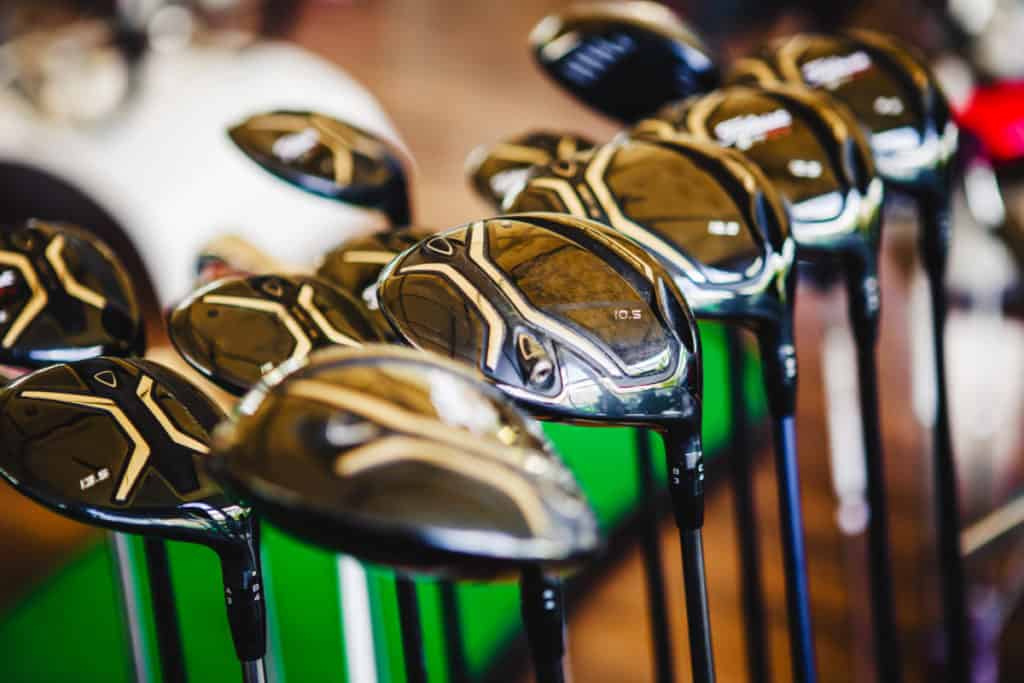
Balancing Quality and Cost
When it comes to golf clubs, there is a wide range of quality and performance available at different price points. Higher-priced clubs often incorporate advanced technologies and materials that can enhance your game, but they may not always be necessary for all golfers. Lower-priced clubs can still provide adequate performance and playability, especially for beginners or occasional golfers. Balancing quality and cost involves identifying your needs and prioritizing the features that will benefit your game the most.
Options for Buying New or Used Clubs
Golfers have the option to purchase clubs as new or used, each with its own advantages and considerations. Buying new clubs ensures that you have access to the latest technologies and guarantees that the clubs are in pristine condition. On the other hand, purchasing used clubs can offer significant cost savings and access to premium clubs at a lower price. When considering used clubs, it is important to evaluate their condition, verify the authenticity, and consider any potential wear and tear. Do thorough research, seek advice from reputable sources, and inspect the clubs carefully to make an informed decision.
Considering the Cost of Accessories
When budgeting for golf clubs, it is important to consider the cost of necessary accessories. Accessories such as golf bags, headcovers, gloves, and golf balls are essential for your overall golfing experience. Allocate a portion of your budget for these accessories, ensuring that you have the necessary items to support your game. It is advisable to invest in quality accessories that provide durability and comfort to enhance your overall enjoyment on the course.
9. Trying Before Buying
Testing and trying golf clubs before making a purchase is crucial in finding the perfect fit for your game. Taking advantage of demo days, fitting sessions, rentals, and seeking professional advice can greatly assist in making an informed decision.
Importance of Testing Golf Clubs
Testing golf clubs before buying allows you to experience firsthand how each club performs and feels. It gives you the opportunity to observe the ball flight, assess the playability, and evaluate the overall comfort and confidence each club offers. Testing clubs also allows you to compare different models, brands, and specifications to determine which ones suit your game the best. By testing clubs, you can make an educated decision, leading to better performance and overall satisfaction with your purchase.
Demo Days and Fitting Sessions
Demo days and fitting sessions are excellent opportunities to test a wide range of golf clubs and receive professional guidance. Demo days often take place at golf courses or practice facilities and allow golfers to try out clubs from various manufacturers. Fitting sessions involve working with a professional club fitter who analyzes your swing characteristics, physical attributes, and playing goals to recommend the best clubs for you. These experiences provide valuable insights, allowing you to make informed decisions when purchasing your clubs.
Benefits of Golf Club Rentals
Renting golf clubs can be advantageous, especially for beginners, occasional golfers, or those traveling to play golf. Renting clubs allows you to try different brands and models without committing to a purchase. It is a cost-effective solution for those who do not play frequently or those who want to test specific clubs or styles before investing. Renting also eliminates the hassle of traveling with your clubs, making it a convenient option for golfing vacations. Remember to communicate your preferences or requirements to the rental facility to ensure you are provided with clubs that suit your game.
Seeking Professional Advice
Seeking professional advice is invaluable when it comes to selecting golf clubs. Golf professionals, instructors, and club fitters are highly knowledgeable in the field and can provide expert guidance tailored to your individual needs. They can assess your swing characteristics, analyze your gameplay, and recommend clubs that enhance your strengths and address any weaknesses. Whether it is seeking advice on fitting, club selection, or specific brands/models, professional input can help you make confident decisions and achieve your golfing goals.
10. Maintaining and Caring for Golf Clubs
Proper maintenance and care of your golf clubs are essential for their longevity and continued optimal performance. Regular cleaning, storage, and periodic check-ups are crucial to ensure your clubs remain in top condition.
Cleaning and Storing Golf Clubs
Regular cleaning of your golf clubs is important to remove dirt, grass, and debris that can accumulate during play. Wipe the club heads with a damp cloth to remove dirt and residue, paying attention to the grooves. Use a mild soap or specialized club cleaning solution for deeper cleaning, following manufacturer instructions. Avoid using abrasive materials or harsh chemicals that can damage the club’s finish. After cleaning, dry the clubs thoroughly before storing them to prevent rust and deterioration.
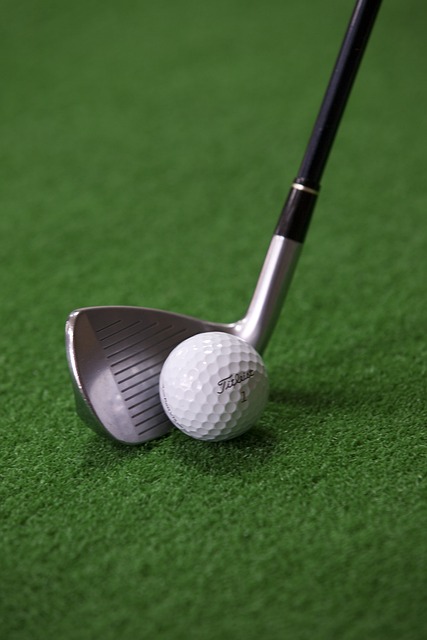
Regular Check-ups and Maintenance
Periodic check-ups and maintenance are crucial to keep your clubs performing at their best. Check the grips for wear and tear and replace them when necessary to maintain a secure hold. Inspect the club heads for signs of damage, such as dents or cracks, and address any issues promptly. It is advisable to have your clubs professionally checked and regripped every one to two years or whenever you notice significant wear or performance decline. Regular maintenance ensures that your clubs remain in optimal condition, enhancing their longevity and performance.
Replacing Grips and Broken Shafts
Grips and shafts are components of the golf club that may require replacement over time. Grips can become worn, slick, or damaged, compromising your hold on the club. Regularly check for signs of wear, such as cracks, separation, or loss of tackiness, and replace the grips as needed. Shafts may also need replacement if they become damaged, bent, or broken. Work with a professional club fitter to assess the condition of your grips and shafts, and to determine the appropriate replacements. Replacing worn grips and broken shafts can restore the performance and feel of your clubs, prolonging their lifespan.
Storage Tips for Long-term Use
If you plan to store your golf clubs for an extended period, it is important to take certain precautions to protect them. Clean and dry the clubs thoroughly before storage to prevent rust and corrosion. Store the clubs in a cool, dry place, away from extreme temperatures and humidity. Avoid storing them in garages, sheds, or attics where temperature and moisture levels can fluctuate significantly. Consider using headcovers to protect the club heads from scratches and dings. Periodically inspect your stored clubs to ensure that they remain in good condition, and address any issues promptly to prevent further damage. By following proper storage practices, you can preserve the performance and integrity of your clubs for years to come.
In conclusion, choosing the right golf clubs is a critical step towards improving your game and enhancing your overall golfing experience. Understanding the components of a golf club, determining your skill level, considering club length and fit, and evaluating club head design, shaft flex and material, grip size and material, club set composition, budget considerations, trying before buying, and maintaining and caring for your clubs are all essential aspects to consider when selecting your clubs. By taking the time to understand these factors and seeking professional advice when necessary, you can make informed decisions and find the perfect clubs that will optimize your performance on the course.


